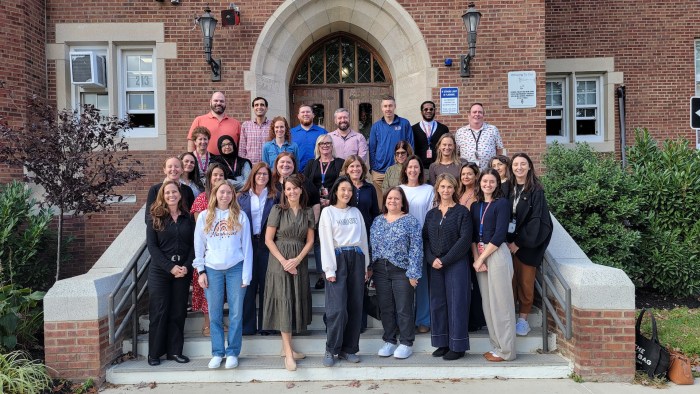Physician and resuscitation expert weighs in on Damar Hamlin
During the NFL game on January 2 between Buffalo and Cincinnati, Buffalo safety Damar Hamlin collapsed on the field after tackling Cincinnati wide receiver Tee Higgins. He remained motionless while medical staff rushed to assist, performing CPR compressions and ultimately using an AED to restart the rhythm of his heart. He was then rushed to University of Cincinnati Medical Center by ambulance. Subsequent reports revealed he had suffered cardiac arrest and was in critical condition. He has since recovered and been released from the hospital.
Dr. Lance Becker, Chair of the Department of Emergency Medicine at North Shore University Hospital in Manhasset, was watching the game when all of this transpired. Dr. Becker is a national and international leader in academic emergency medicine, critical care and resuscitation science. He has been a leader in the field of resuscitation for more than 25 years, pioneering advances in improving the quality of CPR and AED use. His expertise gave him a unique perspective as this event unfolded.
“The national survival rate for somebody who has a cardiac arrest, where their heart stops beating, their survival rate would be, optimistically, between maybe five and 10 percent. … And so if there’s sort of a football analogy to it, it’s kind of like he did a double reverse football play and then a Hail Mary pass and it got caught, and he scored a touchdown.” Becker said.
One factor that contributes to good outcomes is when the emergency happens in a place where medical staff and equipment are on site. “When people have a cardiac arrest in a place that’s prepared, their chances of survival can be very good. We know that two things done quickly are very lifesaving, immediate CPR and getting a shock box placed on the heart. That is very, very lifesaving stuff. And we could have a lot more Damar Hamlins if that happened more frequently to people.”
Cardiac arrest is unusual for young, healthy people. According to the Centers for Disease Control and Prevention (CDC), about 2,000 young, seemingly healthy people under age 25 in the United States die each year of sudden cardiac arrest. On average, an estimated 66 athletes die suddenly of cardiac cause each year in the United States. Many of these deaths can be attributed to genetic differences such as cardiomyopathy and arterial abnormalities.
While it is currently unknown if genetics played a role in Hamlin’s emergency, the most likely cause seems to be commotio cordis, which is a perfectly timed interruption of the heart’s rhythm by blunt force. “In the cardiac cycle, the muscle relaxes and then it waits a little bit before it goes the next beat. There is a little teeny like a millionth of a second in there, where the heart is kind of vulnerable to getting another electrical signal during that time. And when the heart is impacted and compressed, it does actually produce a little bit of electricity,” Dr. Becker said when describing commotio cordis.
Genetics can play a role in making commotio cordis more likely, however. “The heart is a very balanced organ in terms of its electrical state and there are different kinds of channels that let electricity in and out; the heart has millions of those little channels. And you can imagine that a little genetic abnormality or defect in one of those, it changes the balance just a little bit and can make a person more predisposed. So that maybe that vulnerability was bigger for him than for a typical person.” Becker said.
Cardiac arrest does happen to athletes without an impact, however. At an international soccer game in June 2021, Danish midfielder Christian Eriksen of Manchester United dropped suddenly on the field out of cardiac arrest. He also has made a full recovery and actually returned to soccer this year after the installation of an implantable defibrillator.
It’s important to differentiate between a heart attack from a cardiac arrest. A heart attack is where some blood supply to the heart muscle is lost. The part of the heart that was being fed by an artery goes without oxygen and that piece of the heart starts to be injured and eventually will die. A cardiac arrest is when the heart stops beating in its normal way to beat because the electrical system has become chaotic. The electricity is no longer following the normal pattern. The major reason for a cardiac arrest is because somebody has a heart attack, but it can also be because they have a congenital electrical problem.
The best way to improve the outcomes of these sudden cardiac events is interventions. Becker encourages everyone to learn CPR. “That’s a big reason why I believe Damar has done so well, is that he got (CPR). Everyone should learn how to do CPR. If you have two hands and you’re relatively able-bodied, you can do it. People are sometimes afraid of doing CPR. They’re worried that they’re going to hurt the person. There’s a really simple thing that I keep in my head. And it’s sort of ‘no no, go.’ I first say, is that person responsive? Shake the person, slap them, rub on their sternum. Does the person respond? If there’s no response, then that first answer is no. Second question: Is that person breathing normally? If the answer to that is no, start chest compressions on that person. No one has ever died because somebody started compressing on their chest and then they turned out to be okay. That doesn’t really happen. “
Another simple way to help save lives is being aware. Whenever you go somewhere, pay attention to the emergency equipment. “Where is the AED? Is there one in my office or one in my house or is there one near me? that people should think about that. And maybe in the same way that people might know, Oh, where’s the fire extinguisher? Oh, there it is. It’s right by the elevator. Okay. I know where it is. I probably won’t have to use it. But what if I did?” Becker said.
It is critical that everyone take this step and learn this lifesaving technique, because CPR is the best thing to keep blood moving around the body, which keeps the brain from being starved and therefore preserves function. “This is an opportunity to potentially save a child, to save a grandparent, to save a partner, to save a dear friend. The most important thing is that movement of blood that starts to take place when you compress a person’s chest, that’s what helps preserve their brain later on, when they get to the ICU and, and they’re trying to be fully restored. Time is the enemy on this, when somebody drops like Damar did. Wonderful new therapies are being developed that can bring more kind of wins like for like Damar had, but the public is always going to have to be the first step in saving somebody’s life. (The more people who know CPR) the better, and the more wins and saves we’ll have as a society and as a community.”


































